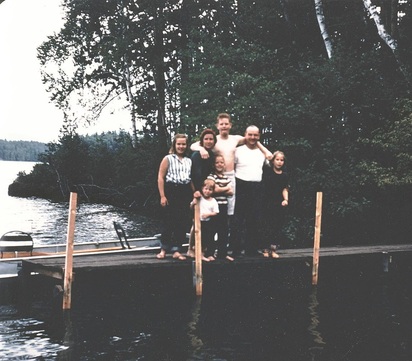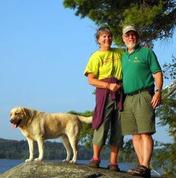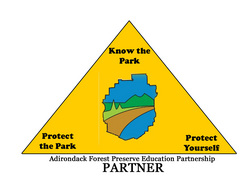
My love affair with the outdoors started in New York State’s unique Adirondack Park, a region roughly the size of the state of Massachusetts that provides a range of outdoor opportunities, from motorboat camping to remote backcountry adventures. My father’s relatives came up during the days when the fresh air of the region was famous for curing tuberculosis. I never met my great-uncle Jack who succumbed to TB in the 1930’s but his charming wife Marnie became my teacher and friend, sharing many adventures with me – her husband’s namesake – and her great nephew. We lived in an old rundown “camp” (summer home) on the shores of Lower Saranac Lake where Mark Twain had spent the summer of 1901. Lower Saranac Lake was a youngster’s dream. The three or four miles of shoreline at our end of the lake were dotted with about thirty or so private summer homes and a hand full of year-round homes. The other three-quarters of shoreline and the fifty or so islands were “forever-wild,” part of New York State’s Forest Preserve constitutionally protected since 1895. The constitution declares that the Forest Preserve “will be forever kept as wild forest lands.”
It was in this setting that my family, cousins, friends and I explored via rowboat, guideboat and runabout, and later by canoe. My sojourns to the Adirondacks in the late fifties were frequently with my family and the “Mark Twain” camp would be our base of operations. We would rent a small motorboat, then my parents would ferry all our supplies and the five of us kids up the lake to “Gravely Point”. We would set up a primitive camp and, although “Leave No Trace” was not part of our vocabulary, my dad would carefully dig a latrine far from shore and set up our sleeping tents out of view of passing boaters. He was careful to warn us against touching the wall of our canvas pup tent during a rainstorm. Doing so would guarantee a soggy sleeping bag by morning. I’m not sure where my dad learned his outdoor skills because, other than hunting, I don’t believe his family were outdoorsy people. My dad was an avid reader, however, and I still have his Ford Treasury of Station Wagon Living volumes 1 and 2 published in 1957 and 1958. These are classics on how to car camp.
Growing up, camping to me was canvas tents, heavy canvas air mattresses and sleeping bags with pictures of pheasants on the liner, Coleman lanterns, coolers with soggy hamburgers in them, marshmallows and corn on the cob cooked (or was that burnt) over the fire. Swimming half the day away and exploring the rest make up most of my childhood memories of camping. It wasn’t wilderness camping in the contemporary sense but it allowed me to grow up comfortable in the outdoors and loving it.
Next up: College Days, the Formative Experience



 RSS Feed
RSS Feed
